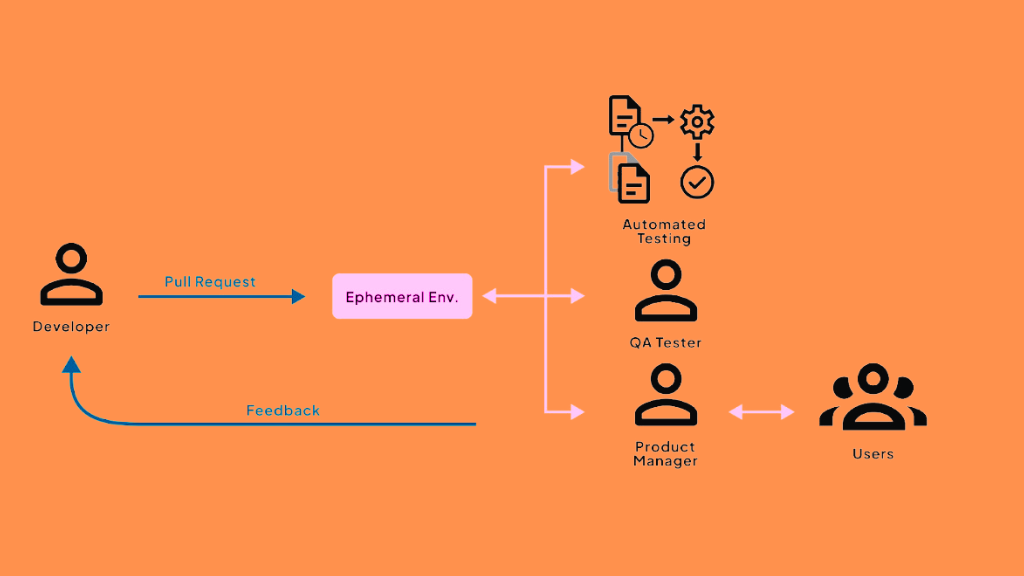In today’s fast-paced software development world, it’s essential to have a development process that is both efficient and effective. One way to achieve this is by using ephemeral environments. In this article, we will explore what ephemeral environments are, how they can benefit your team, and how to automate them.
What are Ephemeral Environments?

Ephemeral environments are temporary environments that are created on-demand for specific tasks, such as testing new features or running automated tests. These environments are created from scratch each time they are needed and are destroyed once the task is complete. This approach is in contrast to traditional development environments, which are often long-lived and require manual setup and maintenance.
The Benefits of Ephemeral Environments
There are several benefits to using ephemeral environments in your development process. Here are some of the most significant advantages:
- Increased Flexibility: Ephemeral environments allow your team to create and destroy environments quickly and easily, providing more flexibility in your development process.
- Improved Collaboration: With ephemeral environments, each team member can have their own environment to work in, reducing conflicts and improving collaboration.
- Faster Testing: Ephemeral environments can be created and destroyed quickly, allowing for faster testing and feedback cycles.
- Reduced Costs: Ephemeral environments can be created on-demand, reducing the need for long-lived environments and lowering infrastructure costs.
Computer Vision Applications in Manufacturing
How to Automate Ephemeral Environments
Automating ephemeral environments can save your engineering team time and reduce the risk of human error. Here are the steps to automate your ephemeral environments:
- Prepare Your Infrastructure: Before you can automate your ephemeral environments, you need to prepare your infrastructure. This includes choosing the right cloud provider for your needs and getting access keys for your automated tooling.
- Choose Your Tooling: There are several tools available for automating ephemeral environments, including Docker, Kubernetes, and Terraform. Choose the tool that best fits your project scope and infrastructure.
- Create Your Environment Configuration: Once you have chosen your tooling, you need to create your environment configuration. This includes defining the resources needed for your environment, such as CPU, memory, and storage.
- Automate Your Environment Creation: With your environment configuration in place, you can now automate the creation of your ephemeral environments. This can be done using tools like Jenkins, CircleCI, or Travis CI.
- Automate Your Environment Destruction: Finally, you need to automate the destruction of your ephemeral environments. This ensures that your resources are not being wasted and that your infrastructure is not cluttered with unused environments. You can use the same tools you used to create your environments to automate their destruction.
Best Practices for Using Ephemeral Environments
While ephemeral environments can provide significant benefits to your development process, there are some best practices you should follow to ensure their effectiveness:

- Keep Your Environments Small: Ephemeral environments should be small and focused on specific tasks. This reduces the risk of conflicts and makes it easier to manage your infrastructure.
- Use Version Control: Version control is essential for managing your ephemeral environments. This ensures that you can track changes and roll back to previous versions if necessary.
- Monitor Your Environments: Monitoring your ephemeral environments is critical to ensure their effectiveness. This includes monitoring resource usage, performance, and security.
- Automate Your Testing: Automated testing is essential for ensuring the quality of your software. By automating your testing, you can ensure that your software is tested thoroughly and consistently.
What Are Kubernetes Services? The Ultimate Guide
Conclusion
Ephemeral environments are a powerful tool for improving your development process. By creating temporary environments on-demand, you can increase flexibility, improve collaboration, and reduce costs. Automating your ephemeral environments can save your engineering team time and reduce the risk of human error. By following best practices, you can ensure the effectiveness of your ephemeral environments and improve the quality of your software.

















